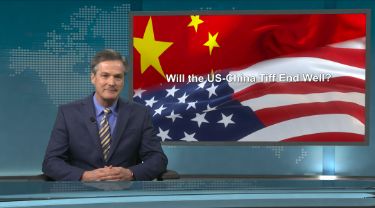It's an epic battle that has the world transfixed. Protectionism has bubbled away in the world economy, producing lots of bluster and certain subtle policy shifts. The subtleties ended with the Trump administration, with overt tariffs used to ignite North American trade talks. Those measures pale in comparison with the trade battle between the U.S. and China, where tariffs have been levied and threatened on a broad swath of bilateral trade. The stakes are high, elevating this to one of the top Canadian – and global – international trade concerns. No one knows this better than both the U.S. and China. So, will it end well?
America’s frustration with China’s trade practices is nothing new. Hints of the current U.S. administration’s position go back as far as 2011, when then-citizen Donald Trump, himself a business beneficiary of low-cost Chinese inputs, tweeted that ‘China is neither an ally or a friend – they want to beat us and own our country.’ Statements like this sold well to the U.S. public during the run-up to the presidential election, and tweets became even more incendiary. They might have initially been greeted as the desperate rants of a wannabe, but on election night, they took on a whole new meaning.
China’s administration took note: a leadership meeting was hastily arranged for April, 2017 in Florida, to develop a 100-day action plan to address trade disagreements. While there was quick action on certain trade items, the U.S. was actively investigating China’s trade practices. Then in 2018, the tariffs began. In February, it was on solar panels and washing machines. In March, steel and aluminium were added. China retaliated in April, and the U.S. upped the ante, creating a list covering $50 billion of Chinese imports that would be subject to a 25 per cent tariff. China countered with their own $50 billion list. After talks, the trade war was put on hold, but the ceasefire lasted a mere nine days. More talks, then in July the U.S. imposed a 25 per cent tariff on a reduced list covering $34 billion of Chinese imports, and threatened to extend that to the full $50 billion list. China imposed tariffs on its own $34 billion list. Days later, the U.S. created a list covering an additional $200 billion of Chinese imports, threatening a 10 per cent tariff. China’s corresponding list included $60 billion of U.S. imports. The escalation was now very serious, and initiated on-again, off-again talks, threats and ultimately imposition of a Jan. 1 deadline. That has now been moved twice, thanks to progress in the talks.
It’s scary stuff, but it’s getting results. Why? Neither side can really absorb the cost of a full-out trade war. China’s economy is still alarmingly dependent on stimulus, and is quite vulnerable to a downshift in its U.S. trade. Stateside, no politician wants to march in to an election season having suddenly jacked up a vast array of retail costs; it sure wouldn’t feel to the average person that things are ‘…great again.' Costs are driving resolution.
What’s more, we believe there will be a significant agreement before the year is out. A first signal is that in spite of the U.S.’s strong-arm tactics, China is not stonewalling; in fact, it is repeatedly coming back to the negotiating table. Second, moving the tariff deadlines twice suggests neither side really wants to go there. Third, progress is being made; concessions are being offered in specific industries, a sign that give-and-take bargaining is happening. Fourth, China has shown increased interest in the Trans-Pacific Partnership deal – one that addresses many of the key concerns of the U.S. administration. Finally, the U.S. has shown through the North American negotiation process that it really does like to get deals done.
If we are right about near-term resolution, the impact on the global economy will be obvious. Many cite this trade battle as a key impediment to current business, and the prime reason for the weakening in recent GDP growth. Clearly it has put a wide array of business investments on hold.
The bottom line?
The U.S.-China trade impasse is all about deal-doing. If it succeeds in delivering the expected results this year, it will prove that the rancour isn’t essentially about deglobalization or even ‘slobalization,’ but about strengthening a global trade apparatus that has brought hundreds of millions out of poverty… and further enriched Canadians and the rest of the developed world.
This commentary is presented for informational purposes only. It’s not intended to be a comprehensive or detailed statement on any subject and no representations or warranties, express or implied, are made as to its accuracy, timeliness or completeness. Nothing in this commentary is intended to provide financial, legal, accounting or tax advice nor should it be relied upon. EDC nor the author is liable whatsoever for any loss or damage caused by, or resulting from, any use of or any inaccuracies, errors or omissions in the information provided.





